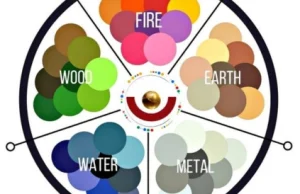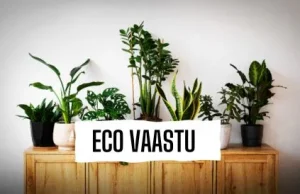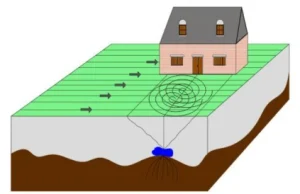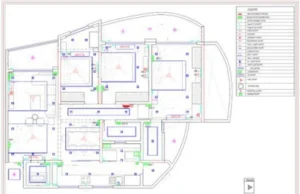Eco Vaastu
Vaastu shastra in modern terms means a scientific method of making a building that combines all the five elements of nature and balances them with humans and products.The earlier residence, palaces, worship places and practicaly all construction was done keeping the vaastu of that particular structure in mind.This would create a perfectly balanced environment which would ensure individuals residing or visting these places with good health, prosperity and happiness.
Activists fail to move the public, not because they are wrong about the problems but because the solutions they offer are unappealing to most people. They called for tightening belts and curbing appetites, turning down the thermostat and living lower on the food chain. They rejected technology, business and prosperity in favour of returning to a simple way of life. No wonder the movement got so little traction. We trash the planet not because we are evil but because our industrial systems leave us with no choice.
Our high-rises, factories,farms, freeways and power plants were conceived before we had a clue how the planet works. These were made not in accordance with the universal laws of nature . This has invariably lead us to pollution, environment, and ecological disasters.Staying in such places have given people disastrous health,wealth and mental problems like lack of sleep , no peace of mind ets. They are primitive inventions that have been designed by people who didn’t fully grasp the consequences of their actions. But as comprehension has grown, a market has emerged for more sensible alternatives.
Green is a theme that is permeating green offices. Research says that promoting environment consciousness in office can help employees. Studies suggest employee productivity in natural lighting is better than in artificial lights.We are in the age and the technology where in we can build a home or office with the same intelligence that humans have. With the help of technology we can have bulbs that switch off automatically sensing outside light, tap water that stops flowing as soon as an individual withdraws their hands and the garden drip irrigation system waters the plants according to their needs.
50 percent reduction in the electricity consumption of a green building can help solve a state’s power woes. It has been widely acknowledged that green buildings can definitely help meet the power crisis in a capital. The green theme thus embraces a wide variety of structures such as corporate offices, gadgets, houses and automobiles. These positive steps could definitely help the world move towards a sustainable future.
Why A Green House?
A) Construction costs are recovered in 3-4 years as electricity and maintenance cost is cut by 40%
B) It does not produce construction waste as most of the material is recyclable
C) A green house takes half the time to construct as compared to a conventional house
D) It adds to the water balance. If harvested, rain water on one acre of land will save 75,000 liters of water.
There is a growing preference among people worldwide for using natural materials, fabrics, even paints and colours in interiors which stems as much from ecological consciousness as spiritual belief. There is talk of geopathic stress related to manmade disturbances to the earth’s electromagnetic field, of volatile organic compounds (VOCs) found in synthetic paints, furnishing fabrics, poorly ventilated cooking appliances, clothing, pesticides, household cleaning agents, all of which cause ill-health, and thereby, some say, misfortune.
The quest for a harmonious environment has also seen the resurgence of the ancient systems of Vaastu shastra
Considering that most people generally spend at least 50 per cent of their day indoors, the quality of air in these spaces becomes an important factor, as poor air quality can lead to several ailments.
Exposure to polluted indoor air can cause a range of problem, such as irritation of the eyes, nose and throat, fatigue, headaches, nausea, etc, which are short-term and easily treatable. However, repeated exposure to such polluted environment can even result in long-term effects that include heart disease, cancer and several debilitating respiratory diseases. Although many people now realize that chemical cleaning products and air- fresheners are an important source of indoor air pollution, there are several other sources of air pollution that home owners need to be aware of, such as:
NEW CARPETS
Risk: Many homes today use carpets in the rooms décor. The synthetic materials used in carpets are capable of emitting significant quantities of volatile organic compounds (VOCs).
BROKEN COMPACT FLUORESCENT LIGHT (CFLs)
Risk: While CFLs great severs of electricity, once they can emit mercury which is hard to clean.
NEW ELECTRONIC AND PLASTIC PRODUCTS
Risk: Most of these products are made with a component known as polyvinyl chloride, which emits pollutants that have been associated with reproductive problems and hormonal abnormalities.
GAS STOVES
Risk: All types of heating equipment, especially gas stoves, are known to produce carbon monoxide which can cause headaches, fatigue and even death when the area is not ventilated properly.
SOAPS AND DETERGENTS
Risk: Since soap is supposed to be sudsy, most readily available soaps are replete with bleaches, artificial fragrances and colours, which individuals end up ingesting or are in contact with all day, as in the case of laundry soap. The real danger, however, lurks in an artificial foaming agent which, in fact, does absolutely nothing to make your dishes or clothes cleaner but gives the appearance of effectiveness as shown in ads on TV. This chemical, sodium lauryl ether sulface, has been proven to cause hormonal imbalances in women.
FIRE-RETARDANT FURNITURE
Risk: The spray used on furniture to prevent fires in houses, particularly on cushioned or upholstered furniture, contains several harmful chemical. These chemicals, called polybrominated diphenyl ethers, or PBDEs, find their way out of the furniture and into the air and food. As individuals ingest and inhale them, there is a genuine risk to the thyroid and liver functioning over long-term exposure.
LEAD – BASED PAINT
Risk: Paint with lead is a particularly acute house hold hazard. If the paint has lead in it, each and every time an individual inhales paint dust , they are at a risk of lead poisoning, depending on the exposure level. This means, each and every time the paint chips or dust from the paint is stirred, the individual can be exposed to noxious lead dust which, in the case of kids, can lead to damage to the brain and central nervous system.
DISPOSABLE CUPS
Risk: Super-thin plastic tea cups and the polystyrene versions are safe for drinking on an occasion. But to use them every day, with foam cups, for example, over the course of several years indivual using this will wind up ingesting the equivalent of an entire cup. The potential health problems range from difficulty in breathing to changes in the platelet counts ,haemoglobin levels in the individual`s blood including nervous system disorders.




